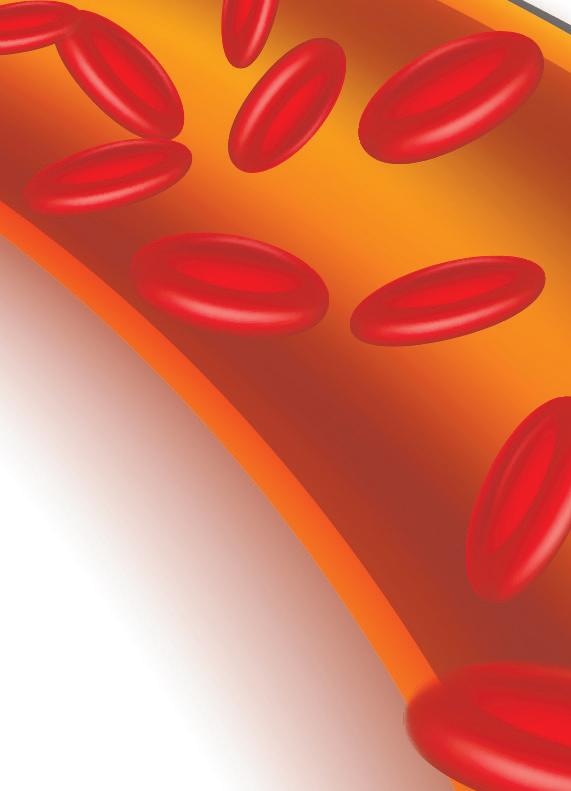
5 minute read
3 Strategies to protect mental health

Improving one’s overall health and maintaining that health over the long haul can have a profound impact on quality of life. For example, the Harvard Medical School notes that regular exercise can slow the natural decline in physical performance that occurs as people age. That means routine exercise can serve as something like a fountain of youth that allows people to keep their cardiovascular fi tness, metabolism and muscle function on par with their younger counterparts.
Advertisement
When attempting to improve long-term health, it’s important that people emphasize mental health as much as they do their physical health. The Anxiety & Depression Association of America notes the importance and effectiveness of preventive efforts in relation to depression and anxiety. In regard to mental health, prevention efforts can function in much the same way that exercise serves physical health. Routine exercise helps people to maintain healthy weights, reducing their risk for various conditions and diseases. Preventive efforts designed to improve mental health can signifi cantly reduce a person’s risk for anxiety and depression.
Various techniques and strategies can be utilized to promote mental health, and these three are simple and highly effective. 1. Get enough sleep.
According to the Primary Care Collaborative, a not-forprofi t member organization dedicated to advancing an effective and effi cient health system, sleep and mental health are intimately related. Sleep loss can contribute to emotional instability. The amygdala is the part of the brain responsible for humans’ emotional responses. When an individual does not get enough sleep, his or her amygdala goes into overdrive, leading to more intense emotional reactions. The prefrontal cortex is another part of the brain that needs suffi cient sleep to function properly. Without it, the prefrontal cortex, which is integral to impulse control, cannot function properly. Adults can speak with their physicians about how much sleep they should be getting each night. Those needs change as individuals age.
2. Eat a balanced diet.
A balanced, healthy diet doesn’t just benefi t the waistline. According to the ADAA, a balanced diet that includes protein, healthy non-saturated fats, fi ber, and some simple carbohydrates can reduce the likelihood that mental health issues like fatigue, diffi culty concentrating and irritability will arise during the day. 3. Volunteer in your community.
A 2020 study published in the Journal of Happiness Studies found that people who volunteered in the past were more satisfi ed with their lives and rated their overall health as much better than people who didn’t volunteer. Perhaps the most noteworthy fi nding in the study was that people who began volunteering with lower levels of well-being tended to get the biggest boost from volunteering. Volunteering provides opportunities to socialize, which can help ward off the loneliness that can sometimes contribute to anxiety and depression.
Mental health is important, and protecting it should be part of everyone’s health care regimen.










Understanding cholesterol
Cholesterol is in many ways considered a dirty word. While cholesterol is too complex to categorize so easily, the widely known complications of high cholesterol make it easy to generalize cholesterol as something detrimental to human health.
But there’s more to cholesterol than meets the eye, and understanding this waxy substance can help men and women get a better idea of their overall health and what they need to do to be even healthier.
Where does cholesterol come from?
Cholesterol is produced by the body, but also comes from the food you eat. The human body makes all the cholesterol it needs and circulates that cholesterol through the blood. But foods, including meat, certain dairy products and poultry, also contain cholesterol, and the liver actually produces more cholesterol if you eat a diet that’s high in saturated and trans fats.
Why is cholesterol potentially dangerous?
According to the National Heart, Lung and Blood Institute, high blood cholesterol is a major risk factor for heart disease. If your body has too much cholesterol in its blood, that excess cholesterol can form plaque in the walls of your arteries, gradually causing a hardening and narrowing of the arteries. Narrow arteries slow blood fl ow to the heart, which needs both the blood and the oxygen that blood carries in order to function at full strength. If plaque buildup in the arterial walls slows or blocks off that blood fl ow, a heart attack may result.
Bad vs. Good?
Many people are now aware that cholesterol is widely categorized as “bad” or “good,” but many of those same people may not know why that distinction is so important. Cholesterol does not dissolve in the blood, so it must be transported through the bloodstream by carriers known as lipoproteins. There are two types of lipoproteins that perform this function: low-density lipoproteins, or LDL, and high-density lipoproteins, or HDL. LDL is what’s commonly referred to as “bad” cholesterol because it contributes to the buildup of plaque, the thick and hard deposits that can line the arterial walls and impede blood fl ow. HDL is the “good” cholesterol, as it helps remove LDL from the arteries. According to the American Heart Association, experts believe HDL gathers LDL before carrying it away from the arteries and back to the liver, where it is ultimately broken and down and passed from the body. Healthy levels of HDL can protect against heart disease and stroke, while low levels of HDL are considered a major risk for heart disease.











